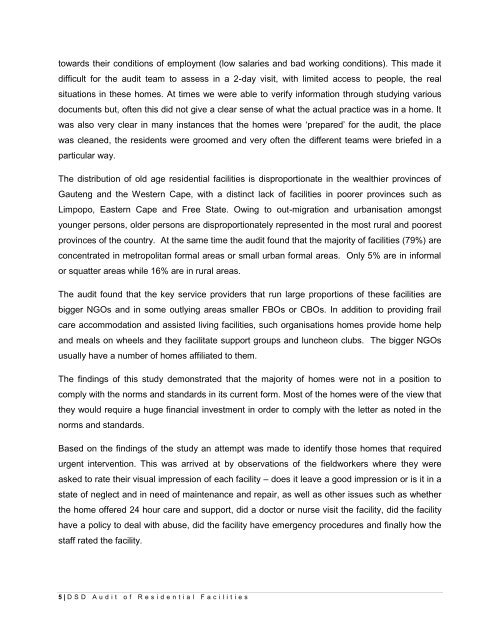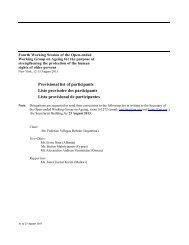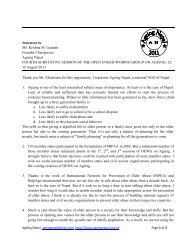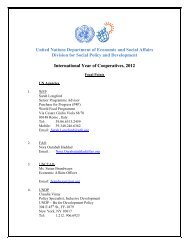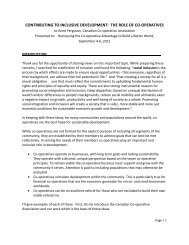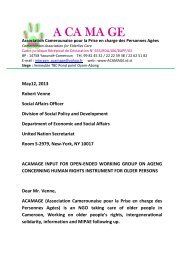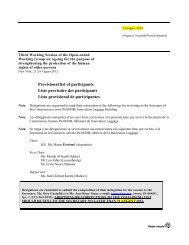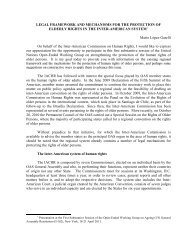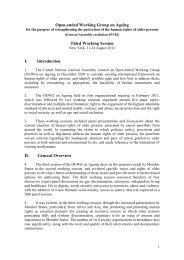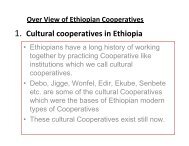Audit of Residential Facilities, Final report - Division for Social Policy ...
Audit of Residential Facilities, Final report - Division for Social Policy ...
Audit of Residential Facilities, Final report - Division for Social Policy ...
You also want an ePaper? Increase the reach of your titles
YUMPU automatically turns print PDFs into web optimized ePapers that Google loves.
towards their conditions <strong>of</strong> employment (low salaries and bad working conditions). This made itdifficult <strong>for</strong> the audit team to assess in a 2-day visit, with limited access to people, the realsituations in these homes. At times we were able to verify in<strong>for</strong>mation through studying variousdocuments but, <strong>of</strong>ten this did not give a clear sense <strong>of</strong> what the actual practice was in a home. Itwas also very clear in many instances that the homes were „prepared‟ <strong>for</strong> the audit, the placewas cleaned, the residents were groomed and very <strong>of</strong>ten the different teams were briefed in aparticular way.The distribution <strong>of</strong> old age residential facilities is disproportionate in the wealthier provinces <strong>of</strong>Gauteng and the Western Cape, with a distinct lack <strong>of</strong> facilities in poorer provinces such asLimpopo, Eastern Cape and Free State. Owing to out-migration and urbanisation amongstyounger persons, older persons are disproportionately represented in the most rural and poorestprovinces <strong>of</strong> the country. At the same time the audit found that the majority <strong>of</strong> facilities (79%) areconcentrated in metropolitan <strong>for</strong>mal areas or small urban <strong>for</strong>mal areas. Only 5% are in in<strong>for</strong>malor squatter areas while 16% are in rural areas.The audit found that the key service providers that run large proportions <strong>of</strong> these facilities arebigger NGOs and in some outlying areas smaller FBOs or CBOs. In addition to providing frailcare accommodation and assisted living facilities, such organisations homes provide home helpand meals on wheels and they facilitate support groups and luncheon clubs. The bigger NGOsusually have a number <strong>of</strong> homes affiliated to them.The findings <strong>of</strong> this study demonstrated that the majority <strong>of</strong> homes were not in a position tocomply with the norms and standards in its current <strong>for</strong>m. Most <strong>of</strong> the homes were <strong>of</strong> the view thatthey would require a huge financial investment in order to comply with the letter as noted in thenorms and standards.Based on the findings <strong>of</strong> the study an attempt was made to identify those homes that requiredurgent intervention. This was arrived at by observations <strong>of</strong> the fieldworkers where they wereasked to rate their visual impression <strong>of</strong> each facility – does it leave a good impression or is it in astate <strong>of</strong> neglect and in need <strong>of</strong> maintenance and repair, as well as other issues such as whetherthe home <strong>of</strong>fered 24 hour care and support, did a doctor or nurse visit the facility, did the facilityhave a policy to deal with abuse, did the facility have emergency procedures and finally how thestaff rated the facility.5 | D S D A u d i t o f R e s i d e n t i a l F a c i l i t i e s


